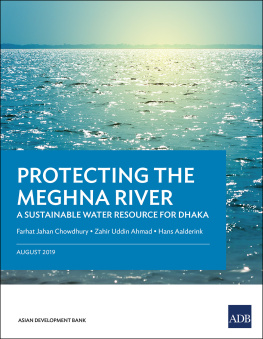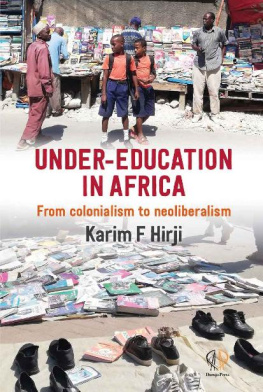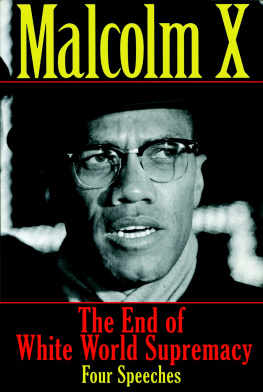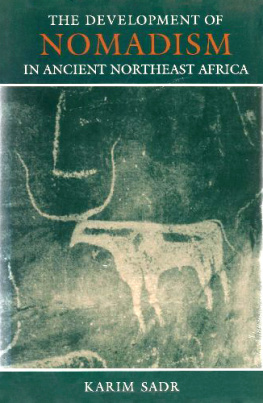LONDON SCHOOL OF ECONOMICS
MONOGRAPHS ON SOCIAL ANTHROPOLOGY
Managing Editor: Dr A. Gell
The Monographs on Social Anthropology were established in 1940 and aim to publish results of modern anthropological research of primary interest to specialists.
The continuation of the series was made possible by a grant in aid from the Wenner-Gren Foundation for Anthropological Research, and more recently by a further grant trom the Governors of the London School ot Economics and Political science. Income from sales is returned to a revolving fund to assist further publications.
The Monographs arc under the direction of an Editorial Board associated with the Department of Anthropology of the London School of Economics and Political Science.
MA' BETISK CONCEPTS OF LIVING THINGS
FOR
MY PARENTS
DR A. KARIM AND BISMILLAH BEGUM
LONDON SCHOOL OF ECONOMICS
MONOGRAPHS ON SOCIAL ANTHROPOLOGY
No. 54
MA BETISK CONCEPTS OF LIVING THINGS
BY
WAZIR-JAHANBEGUMKARIM
First published 1981 by Bloomsbury
Published 2020 by Routledge
2 Park Square, Milton Park, Abingdon, Oxon OX14 4RN
605 Third Avenue, New York, NY 10017
Routledge is an imprint of the Taylor & Francis Group, an informa business
Wazir-Jahan Begum Karim 1981
All rights reserved. No part of this book may be reprinted or reproduced or utilised in any form or by any electronic, mechanical, or other means, now known or hereafter invented, including photocopying and recording, or in any information storage or retrieval system, without permission in writing from the publishers.
Notice:
Product or corporate names may be trademarks or registered trademarks, and are used only for identification and explanation without intent to infringe.
British Library Cataloguing in Publication Data
Karim, W.
Ma Betisek concepts of living things.
(Monographs on social anthropology, ISSN 0077-1704; 54)
1. Ethnology Malaysia Carey Island
I. Title II. Series
959.51 DS595
ISBN 13: 978-0-4851-9554-5 (hbk)
Preface
The Ma' Betisk are a group of aborigines, who live on the mangrove coastal areas of Selangor in peninsular Malaysia. This research however is mainly focussed on the Ma' Betisk communities on Carey Island, off the west coast of Selangor and in particular three villages called Sungei Sialang, Sungei Mata and Sungei Bumbun.
My research on the Ma' Betisek began in 1973, when I was given a grant by the University of Malaya, to conduct research on religious aspects of the lives of the Betisek people of Selangor. In 1974, the Ford Foundation awarded me a fellowship to continue with my research on the Ma' Betisk. The major part of my field work was completed in 1975 and my thesis was written up in London with the help of a Scholarship from the Association of Commonwealth Universities. This monograph is a modified version of my thesis, 'The Belief System of the Ma' Betisk of Carey Island, Malaysia', submitted at the London School ot Economics 111 1977. I had the opportunity to update some of my material in 1978 when I returned to Malaysia to take up a teaching post.
It is remarkable that so few changes have taken place in the beliefs of the Betisk people on the island since 1975. Despite increasing deforestation and new urban influences on the island, the Betisk people continue to uphold their naturistic ideas of how humans should live with plants and animals the problem which this study attempts to unravel. On the mainland however, the Ma' Betisek are busy keeping pace with development and modernity and express a concern for the backwardness of their friends in the mudflats. I should like, given the time and opportunity, to follow up this study with a comparative analysis of the island and mainland Ma' Betisk and the apparent differences in their world view.
Acknowledgements
I would like to extend my sincerest thanks to Dr Stephen Morris, Dr Maurice Bloch and Dr Geoffrey Benjamin for providing me with all the necessary assistance and guidance in my research.
To Professor Rodney Needham, I wish to express my appreciation for his useful comments and suggestions in interpreting Ma' Betisek ethnography. My thanks also to my friend and colleague Salmi Nazerali for her constant support and help in my work and to Wahid Karim and Gulrose Begum for their assistance in the organization of my material. Also, a special note of thanks to the staff and my fellow students at the Department of Anthropology of the London School of Economics for their numerous helpful suggestions and comments.
I can only hope to mention some of the names of the various people who have helped me in some way or another during the period of my fieldwork. I am indebted to Dr E. Soepadmo from the School of Biological Sciences, University of Malaya, for so kindly helping me identify some of the plants which are used by the Ma' Betisk for rituals and herbal medicine. My thanks to the Staff of the Department of Geography and the Department of Anthropology and Sociology from the University of Malaya for assistance offered during the Economic Survey conducted in 1975 and for photocopying and mapping documents and charts used in the field. I also wish to thank the staff of the Department of Aboriginal Affairs in Kuala Lumpur, the Orang Asli Hospital at Gombak and the managers of Pataling Estate on Carey Island for their invaluable co-operation and assistance during my fieldwork.
It is difficult to express my gratitude to the Ma' Betisk on Carey island. All I can say is that, for people who feel so intensely proud of their own culture, I can only hope that I have presented it in the way they would have wanted it to be told. To my Ma' Betisk family at Carey Island, Ahmad Kassim, Mijah, Jaman, Milah and Johan, my deepest love and affection.
W.A.K.
Pronounciation Guide
Stress in the Betisk language is usually on the last syllable of the word and this includes words which have recently been adopted from Malay. For example, the word for 'chair' is derived from the Malay word kerusi but pronounced as kusik. Here, it should be mentioned that a number of Malay words adopted into Betisk are shortened in this way, i.e. by removing the second syllable in the word but retaining the second vowel in the first syllable. Thus, the Malay word belukar ('secondary forest') becomes bukar, pelandok ('deer') becomes pandok and perahu ('boat') becomes pahuk. Malay words are also shortened by dropping the first syllable. Thus sekolah ('school') becomes kolah and kemarau ('drought') marau. Sometimes, two Malay words are joined to form a new word. Thus bela hantu ('to rear spirits or ghosts') becomes belantuk. Malay words ending with the consonant ng are modified to end with a glottal check. Thus metnang ('sure') becomes mema' Malay words ending with a vowel are usually modified to end with a k. Examples are kaluk ("if"), maluk ('shy') and hatik ('heart').
The Ma' Betisk, particularly the women, speak at a very high pitch and run their words together, finally drawing out and lengthening the last syllable in the sentence. As a result, their speech has a nasal, humming quality but without much variation in tone. Exceptions are in statements of commands, fear or anger.









